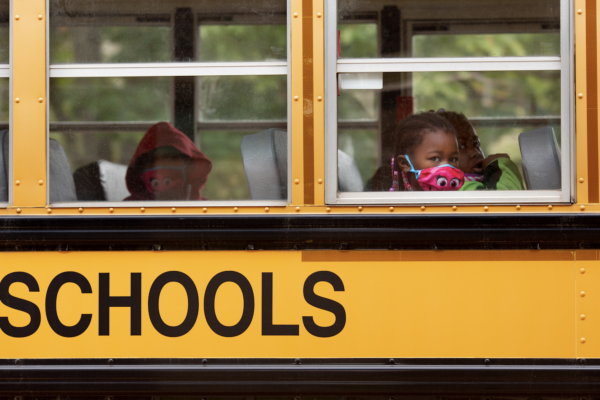With the coronavirus surging again and state and local officials closing down communities for a second time, many are arguing that schools must open or be kept open. The argument rests on incomplete evidence and ignores the fact that we have reached a point in the pandemic where the capacity of our increasingly overwhelmed healthcare system to respond to the medical crisis must dictate what stays open as winter descends and what stays closed, including schools.
The consequences of school closures are real. From long-term learning loss to the challenges of accessing social-emotional and mental health support, no decision to close school should be made casually, particularly for schools serving our most vulnerable students. Opening schools for in-person instruction should have been a high priority in the fall, when community spread was low in many parts of the country, and a full return to school buildings should be among our highest national goals going forward.
But available state and local data do not provide a clear picture of how much COVID-19 transmission is occurring within schools or the extent to which children are contributing to community spread. With 1,000 hospitals across the U.S. reporting critical staff shortages this week, and a fifth of all U.S. hospitals reporting critical shortages, can we run the risk of keeping schools open now without understanding the implications?
The reality is that we’re debating school openings on the basis of politics and preference, with inadequate data to support the reasoning. However desperately we wish to travel back in time and undo the decisions that prioritized reopening bars and restaurants over schools, we cannot. We are where we are—on a trajectory to reach 200,000 new cases and 2,500 deaths daily in the next two weeks.
Of course, some schools, even in locales with moderate community spread, have succeeded in limiting in-school transmission by implementing a coherent and consistent lattice of preventive interventions including masking, distancing, and good hygienic practices. But some is not all, and the limits of available data do not allow us to generalize about the safety of our nation’s 130,000 public and private schools.
Proponents of keeping schools open through the current wave most consistently cite as evidence a dashboard compiled by the National Education Association, the nation’s largest teacher union, and Brown University’s COVID-19 Dashboard. Unfortunately, these data are not definitive. Brown University’s Dashboard, a valuable project attempting to fill the vacuum created by the federal government’s inaction on school-level data gathering, relies on staff and student infection rates submitted voluntarily by schools. As a result, it over-samples private schools and under-samples schools serving low-income students. Similarly, the NEA data are also self-reported and represent less than ten percent of America’s schools. We cannot safely generalize about school opening based on small, non-representative samples.
[Read More: Roadmaps to Reopening: State Guidance to Schools on Masks and More]
Evidence also remains limited on the question of whether children are contributing to community spread. Several states that permitted schools to offer in-person learning during the fall did not show significant changes in case counts or hospitalizations until two weeks ago. Since then, the data have begun to muddy the water with confirmation of household spread from children. Only time can tell us the true correlation between school opening and community spread. Unfortunately, because of a monumentally flawed testing and contact tracing regime, that day will not come soon.
It is nearly impossible to know the extent to which children, who may have been infected in school and are more likely to be asymptomatic, are bringing COVID-19 home. In many states, up to 54 percent of infected persons have no idea where they contracted the infection. Based on the science of how respiratory viruses spread, it seems unlikely that the one million American children who have tested positive for COVID-19 since the beginning of the pandemic, and the likely millions more who were asymptomatic, don’t account for some level of the current community spread.
But what about Europe? If Europe has kept its schools open, surely so can we! Unfortunately, there are fundamental differences in the way Europe and the U.S. have approached closures during the pandemic. Neither our current leadership nor the general populace in many states will make the sacrifices that have allowed schools to stay open in Europe; many European countries closed bars, restaurants, and theaters aggressively during their lockdowns; America has not and will not. Cases will surge because of Thanksgiving travel.
Compounding the pandemic’s dangers are other, more familiar threats to public health. As every parent knows, schools are hotbeds of non-COVID-19 disease transmission every winter. The CDC estimates that every year tens of thousands of children are hospitalized for the flu. While interventions meant to prevent the spread of COVID-19 may limit the spread of flu and other common colds, keeping schools open risks increasing the burden on health systems that are short on supplies, staff, and beds.
Of course, we want it to be true that schools are uniformly safe and kids are not contributing to community spread. Of course, we want to free parents, particularly mothers, from the incompatible burdens of work and childcare. Of course, we want to go back in time and change our collective behavior so that schools and hospitals could now operate at something approaching normal. But wishing does not make it so. We must acknowledge the uncertainty of the data and choose caution over wishful thinking. In the short-term, it will be necessary to close many of our schools so our hospitals have the best chance of remaining open.
Mario Ramirez, an emergency medicine physician, served as acting director for pandemic and emerging threats at the U.S. Department of Health and Human Services. He is managing director of Opportunity Labs, a non-profit consultancy and product design firm, and a FutureEd Senior Fellow. Andrew Buher is the founder of Opportunity Labs, a former chief operating officer of the New York City Department of Education and a FutureEd Senior Fellow.


